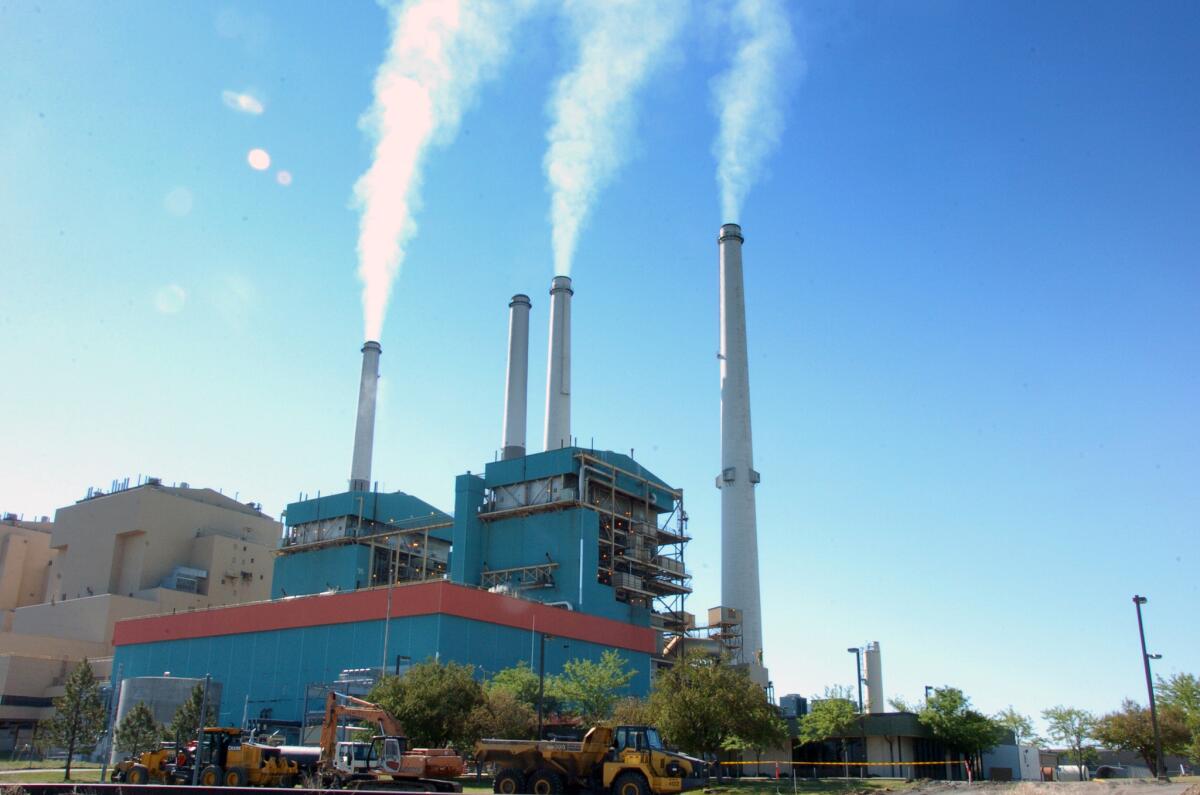Obama must walk a climate tightrope

President Obama had barely announced his new climate strategy late last month when the criticism began. The plan, which will regulate carbon pollution from the nationâs power plants for the first time, is an important step in addressing global warming. Republican reaction in Congress was predictably scathing. And while most green groups praised the proposal, some environmentalists were frustrated, calling it âtoo little, too lateâ or ânot nearly enough.â
Are they right?
The plan could have been bolder, but only if the administration took bigger political and legal risks. For example, the Environmental Protection Agency might have set a national air quality standard for carbon dioxide, as it has done for conventional pollutants such as smog and soot, and required the states to issue implementation plans for how they would comply. The EPA has authority under the Clean Air Act to do this, and it would have amounted to an economy-wide program for cutting greenhouse gas emissions, potentially yielding much bigger cuts than the presidentâs plan.
VIDEO: Climate change gets its close up
But the EPA has consistently rejected this approach, on grounds that it could take more than a decade to implement, would enrage many states and would risk a backlash in Congress. Critics say that this approach is appropriate for ground-level pollution that states can more easily control but not for greenhouse gas concentrations, which are the result of global emissions that the states alone cannot change.
The agency could also make a difference â without setting a national standard for CO2 â by using a little-know provision of the Clean Air Act that addresses international air pollution. If the EPA finds, either on its own or at the request of the State Department, that U.S. emissions contribute to pollution that may âendangerâ other nations, it must direct states to revise their pollution plans to prevent the endangerment.
Roger Martella, the EPAâs general counsel in the George W. Bush administration, has called this strategy âthe most effective, flexible, economically reasonable and legally supportable means by which to regulate greenhouse gas emissions.â And an NYU think tank has petitioned the EPA to use it.
So far the administration seems to consider this untried provision too risky, perhaps worrying that it would provoke Congress to block individual EPA regulations or, worse yet, amend the Clean Air Act to deny the agency authority over greenhouse gases.
Thus, the administrationâs new climate plan is carefully calibrated to manage these risks while making incremental progress. Going after power plants and pushing efficiency standards may not be bold, but it is pragmatic.
The other risk influencing the administrationâs actions lies with the courts. The president must work with the laws on the books when it comes to using executive power to implement a policy if Congress fails to act. Statutes like the Clean Air Act were not designed with climate change in mind, which means the agencies must creatively adapt them to deal with global warming.
Even the presidentâs more modest plan to set standards for power plants is legally risky, especially with regard to existing plants. The law calls for states to set these standards, subject to EPA approval.
The most effective approach would be for the EPA to allow states maximum flexibility. For example, states could comply with the standards for power plants through emissions cuts that would come from energy efficiency and renewable energy programs. These reductions could count as credits, easing the cost of the program for power plants and reinforcing steps the states have already taken to address climate change.
But the courts might balk at such an interpretation, which seems to stretch the word âstandardâ into a broader emissions trading program. And the EPA has never used this approach.
The administration has been sued at every step of its greenhouse gas program, and these new rules will be challenged too. In recent years, courts have invalidated EPA pollution rules that offer novel interpretations if they go beyond the lawâs literal text. As a result, the most economically sensible policies run the greatest risk of being struck down.
The situation isnât ideal, but itâs what happens when Congress sits on the sidelines. The action shifts to the executive branch, and then to the courts.
Combating climate change requires large, long-term, economy-wide greenhouse gas reductions. It requires a plan to shift away from fossil fuels.
The presidentâs plan, while laudable, is not that plan. For truly bold action on climate change, we need Congress to engage.
Jody Freeman, a Harvard law professor, was counselor for energy and climate change in the White House in 2009 and 2010.
More to Read
A cure for the common opinion
Get thought-provoking perspectives with our weekly newsletter.
You may occasionally receive promotional content from the Los Angeles Times.










